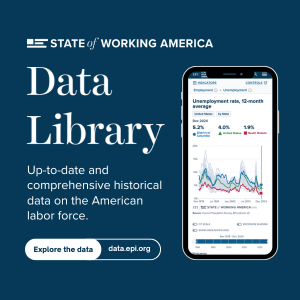What to Watch on Jobs Day: Nominal Wages, Teacher Gap, and Upward Revisions
Tomorrow, the Bureau of Labor Statistics will release the September numbers on employment, unemployment, and nominal wages. While the report contains a host of data, there are three particular numbers I’m going to be watching closely.
First, the overall employment numbers from the payroll survey were lower than expected last month. Consensus estimates had projected job growth of about 230,000, but they came in at only 142,000. The consensus so far for September is again in the low 200,000s. So, two key things to watch: whether there are any upward revisions to the August employment numbers and whether the September numbers come in below consensus two months in a row. Last month, I suggested that slow job growth should make those arguing that policymakers need to worry about an overheating economy and inflationary pressures reconsider. Tomorrow, we will get some more information that can inform the question of whether we are at a new lower trend, which I hope not, or whether last month was a blip in a jobs picture that has otherwise been consistent for much of this year.
Second, with kids heading back to the classroom, it’s worth re-examining the teacher gap—the gap between actual local public education employment and what is needed to keep up with growth in the student population. During the recession, thousands of local public education jobs were lost, and those losses continued deep into the official economic recovery (as did public sector jobs in general). The costs of a significant teacher gap are measurable: larger class sizes, fewer teacher aides, fewer extracurricular activities, and changes to the curriculum. And, in sheer numbers, the teacher gap can explain a non-trivial part of the overall jobs gap. On Friday, I will compare where jobs in public education should be, using the precession ratio, student population growth, and the most recent jobs numbers.
Third, I’ll continue to track nominal wages. Last month, Josh Bivens and I explained how very far we are from the kind of wage growth that would suggest that the Federal Reserve can put the brakes on the economy. On Friday, we will put the latest nominal wage trends in perspective, both historically and against target level wage growth. These numbers on nominal wage growth are likely to be the single most important indicator in coming months driving Federal Reserve decisions.
Enjoyed this post?
Sign up for EPI's newsletter so you never miss our research and insights on ways to make the economy work better for everyone.
